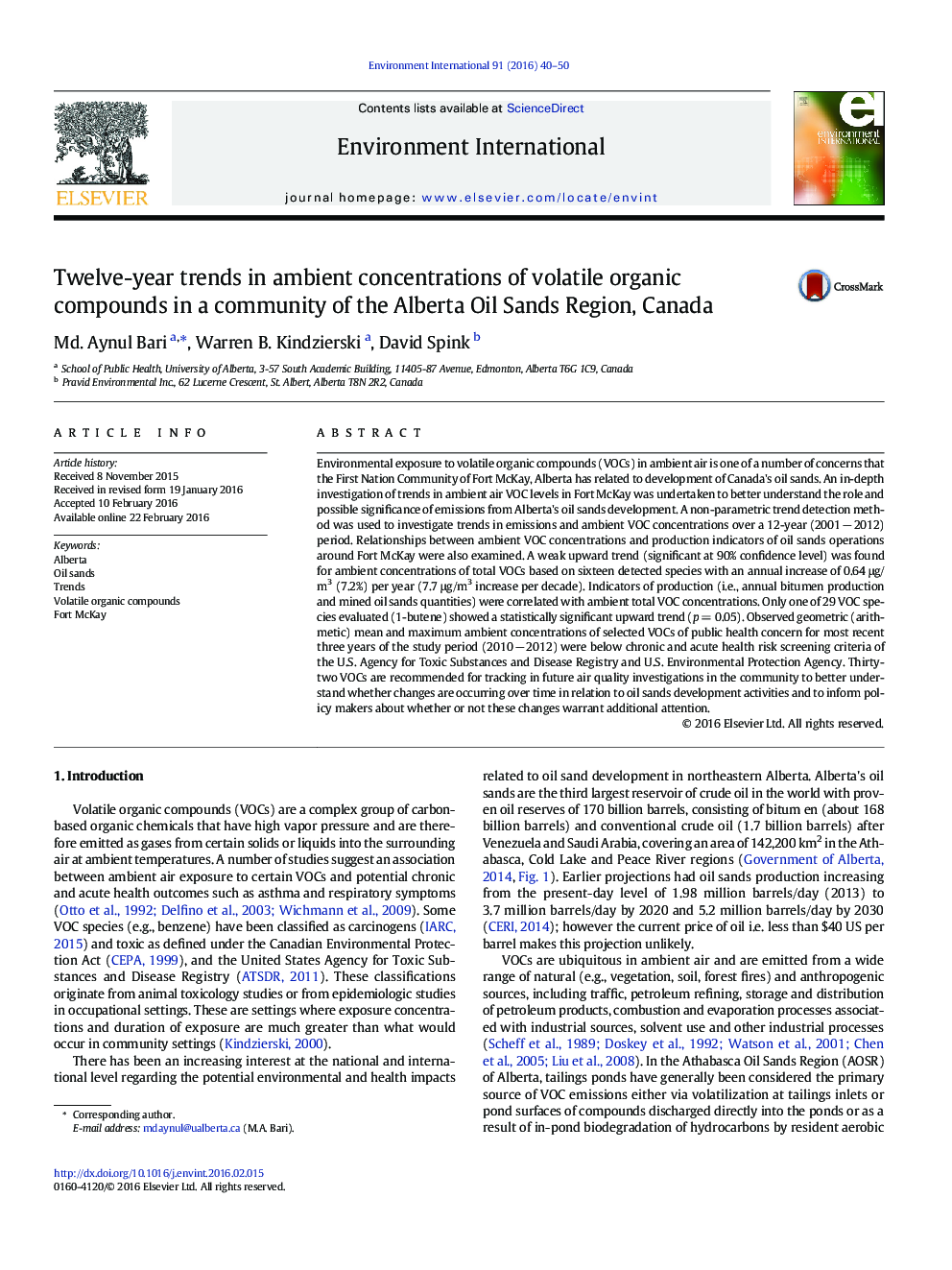| Article ID | Journal | Published Year | Pages | File Type |
|---|---|---|---|---|
| 6313188 | Environment International | 2016 | 11 Pages |
â¢A 12-year trend in ambient VOC levels was investigated in an oil sands community.â¢A weak upward trend (significant at 90%) observed for ambient VOCs at Fort McKayâ¢Annual bitumen production and mined oil sands were correlated with ambient VOCs.â¢Observed VOC levels were below chronic and acute health risk screening criteria.
Environmental exposure to volatile organic compounds (VOCs) in ambient air is one of a number of concerns that the First Nation Community of Fort McKay, Alberta has related to development of Canada's oil sands. An in-depth investigation of trends in ambient air VOC levels in Fort McKay was undertaken to better understand the role and possible significance of emissions from Alberta's oil sands development. A non-parametric trend detection method was used to investigate trends in emissions and ambient VOC concentrations over a 12-year (2001 â 2012) period. Relationships between ambient VOC concentrations and production indicators of oil sands operations around Fort McKay were also examined. A weak upward trend (significant at 90% confidence level) was found for ambient concentrations of total VOCs based on sixteen detected species with an annual increase of 0.64 μg/m3 (7.2%) per year (7.7 μg/m3 increase per decade). Indicators of production (i.e., annual bitumen production and mined oil sands quantities) were correlated with ambient total VOC concentrations. Only one of 29 VOC species evaluated (1-butene) showed a statistically significant upward trend (p = 0.05). Observed geometric (arithmetic) mean and maximum ambient concentrations of selected VOCs of public health concern for most recent three years of the study period (2010 â 2012) were below chronic and acute health risk screening criteria of the U.S. Agency for Toxic Substances and Disease Registry and U.S. Environmental Protection Agency. Thirty-two VOCs are recommended for tracking in future air quality investigations in the community to better understand whether changes are occurring over time in relation to oil sands development activities and to inform policy makers about whether or not these changes warrant additional attention.
